|

How long 'til
Beijing? Milestones on the road give us the exact information -
3346 km

Desert in the
West, 200 km further lies Lop Nur, the nuclear bomb test area of
China.
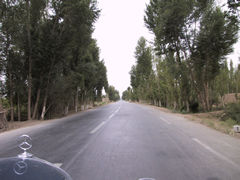
The number of
oasis towns increases
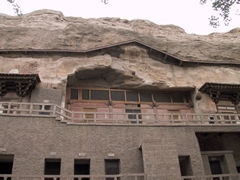
The Mogao caves,
a wonderful treasure of Chinese-Buddhist heritage. 492 caves have
been carved into stone and painted with colorful Buddhist motives
and adorned with sculptures. The first of these caves were begun
in the fourth century and the work was continued for a thousand
years. The caves contain the 2nd largest Buddha sculpture in China
(32 m), 45000 square metres of wallpaintings and 2000 painted clay
sculptures. A sight worth seeing but with no possibility of photography,
therefore we can only offer this view from outside (the structure
built around the caves is new to protect the caves from theft, etc.)
|
|
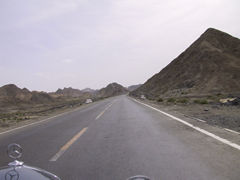
Shortly before
leaving Xianjiang province and entering Gansu province
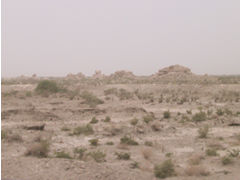
Remains of the
"Great Wall", the former border of China at its furthest
West.
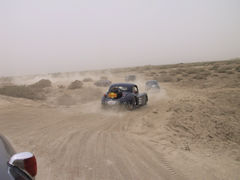
Another one
of those reroutes through the dessert due to construction work,
albeit a short one.
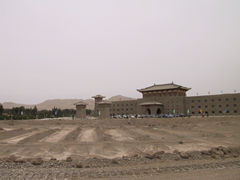
Our hotel: A
newly-built "palace" in the middle of the dessert (just
outside of Dunhuang) with large sand dunes in the background. The
sand dunes are sometimes used for sand-sledding (!?). A rare and
bizarre sight to see a hotel like this on our route so far and we
were wondering who normally fills up the rooms.
|
